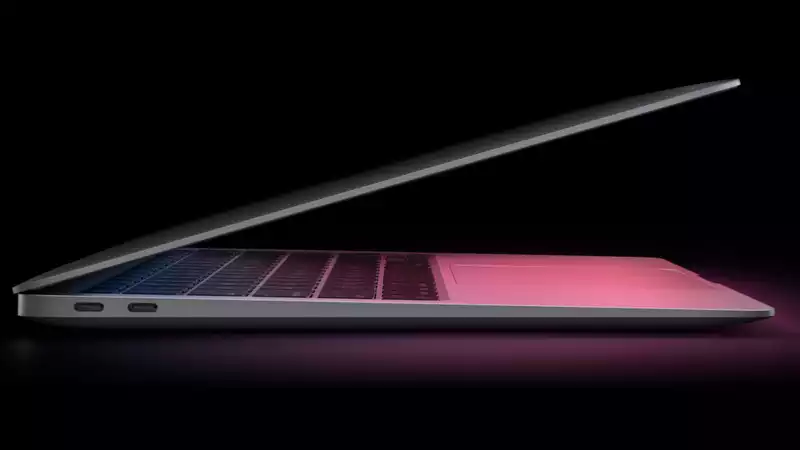It hasn't been a great year for Intel, with AMD taking the performance crown, beating Intel to the punch with its powerful multi-core processors, and owning more CPU markets than it has in years.After years of developing the fastest mobile chips for the iPhone, Apple has completely moved on from Intel with its new MacBook Air, completely breaking away from Intel and launching its first CPU for the Mac. According to Apple, "This is not an upgrade. It's a breakthrough"
.
Apple did a number of pull-out comparisons to show that the new M1 processor offers "up to 3.5x faster CPU performance" than the Intel i7 in a traditional MacBook Air or "3x more CPU performance per watt" than a traditional MacBook Pro. The fine print of this first claim refers to transcoding video with Apple's own Final Cut Pro software using Apple's own ProRes video format.
Another claim of "matching the peak performance of a PC at 25% power consumption" is based on vague testing "compared to the latest generation of high-performance notebooks on the market." While we won't know how Apple's M1 chip compares to the Intel and AMD processors in today's Windows notebooks until we actually test it, we don't believe that Apple is really trying to compete in power with the best gaming notebooks. In fact, the new MacBook Pro and Mac Mini show that there are still Intel CPU options at the high end, and that the M1 can't (yet) match something like a full-power i7. what the M1 really boasts about is efficiency.
The 8-core M1 processor is manufactured at 5nm and brings mobile-like power efficiency to Apple's laptops. Apple claims that the new MacBook Air has a battery life of 18 hours, six hours longer than the previous model; the MacBook Pro is even better at 20 hours. The new Macs will be able to run iOS apps natively, and the same image processing that Apple uses in mobile can be applied to this webcam.
This is clearly a major turning point for Apple, and there is no telling how app support will look in the next few years for the OS. Last year, an OS update threatened the long-standing viability of the 32-bit game. Apple has not yet completely abandoned the x86 architecture Intel CPUs, but it is clearly moving in that direction. In another year or two, the successor to the M1 may be powerful enough to run a high-end MacBook Pro.
Even if you're not interested in Apple hardware, it's a really exciting year for CPU development, even if the Mac is not yet a thriving gaming platform. Apple is pushing the ARM architecture from mobile to computers, and AMD is making great strides in laptop graphics power. Meanwhile, Nvidia acquires ARM, the company behind the architectural designs used in all our mobile devices. How will this affect the future of Nvidia's hardware, or the computing industry as a whole? We have no idea, but it seems certain that competition will become increasingly fierce.
But right now, the MacBook Air may be the best value among Apple's offerings. The new version, which weighs 2.8 pounds, starts at $999. It goes on sale November 17.


Comments